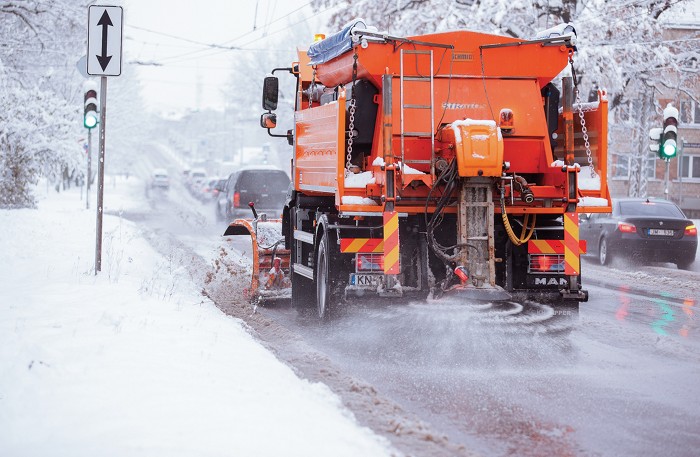On a snowy day, drivers feel relief when road salt helps clear the way of slippery spots. But, though necessary under certain circumstances, road salt is a major polluter of Michigan’s rivers, inland lakes and the Great Lakes.
Road salt has a number of undesirable effects:
- Corrosion of cars, trucks, bridges, and roads resulting in approximately $5 billion in annual repairs in the U.S.
- Infiltration of nearby surface and ground waters that can contaminate drinking water reservoirs and wells. High salt levels can harm people with high blood pressure, and high chloride levels in surface waters are toxic to some fish, bugs, and amphibians.
- Killing of roadside plants and harming wildlife that eat the salt crystals.
The Great Lakes are feeling the effects of road salt. In 2021, scientific researchers estimated chlorides in Lake Michigan had risen from about 1-2 milligrams per liter before European settlement to more than 15 milligrams per liter. The Lake Michigan study found that watersheds with a greater area or roads, parking lots and other paved surfaces tend to have higher chloride levels due to direct runoff into streams and lakes.

Canadian researchers found levels ranging from 1.4 milligrams in Lake Superior to 133 milligrams per liter in Lake Ontario. Although these levels are well below the chloride drinking water standards of 250 milligrams per liter, rising concentrations may have ecological effects. And the trend does not bode well for the future.
Twenty to thirty million tons of road salt are used on U.S. roads each winter. That’s equivalent to the weight of 175,000 blue whales or 62,000 passenger airplanes.
The easiest solution to rising chloride levels in the Great Lakes is to use less road salt, and transportation officials have searched for ways to apply less salt on roads during the winter while keeping roads clear and safe for motorists. The most direct way is to put salt on fewer roads. In some cases, sand or ash is used as an alternative to rock salt in lower-traffic areas.
A 2020 Michigan law requires the state Department of Transportation to implement a pilot program on the use of agricultural additives to control ice on public roads, highways, and to review the potential efficacy and environmental impacts of agricultural additives. The Department rejects a claim that it has been too “stingy” in its use of road salt, noting that salt becomes less and less effective below 20 degrees Fahrenheit.
Curbing salt pollution is possible at home. Here are winter tips:
- Shovel first – Shovel any snow or ice away before putting salt onto a hard surface. It takes less salt to do the same job and works more quickly.
- Maintain a 3-inch spacing between grains of salt – A rule of thumb is that grains of salt should be about 3 inches apart. If you prefer to measure salt, a general guideline is to use no more than 1 to 1.5 cups per every two parking lot spaces or 10 sidewalk squares.
- Sweep up extra salt to reuse – If you accidentally use too much salt during one storm and see piles of salt on the pavement afterward, sweep up the extra salt and reuse it during a future storm. If you leave it on the pavement, it will run off to nearby vegetation, to a storm drain, or into a local water body.